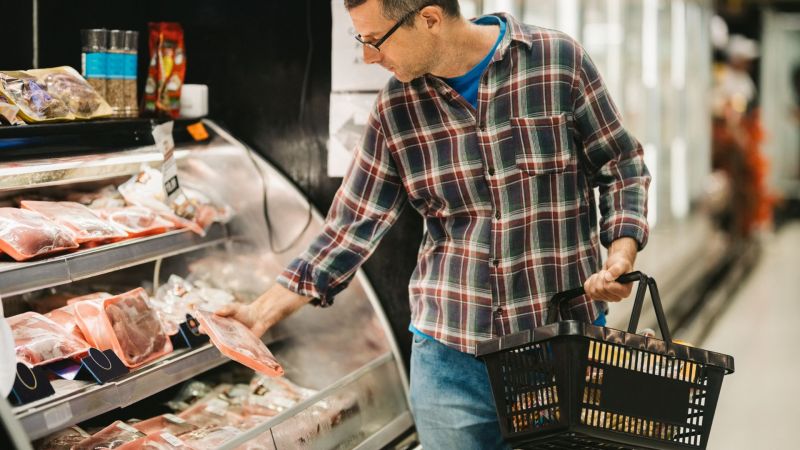
In past years, nothing has ignited Canadian national pride quite like a successful Olympics or international hockey tournament. But 2025 is different. U.S. president Donald Trump has fired a shot across Canada’s bow with his planned tariffs and alarming comments on making the country the 51st U.S. state. Admittedly, Trump has done more to align Canada in recent decades than Canadians ever could have.
As moves and countermoves are made in what The Wall Street Journal calls the “dumbest trade war in history”, we can expect Canadians and Americans to feel the impact of higher prices on their wallets. The search is already on for substitutes for day-to-day purchases.
A robust (and very appropriate) Buy Canadian movement is evolving. Travelers are cancelling plans to the U.S. in favour of great Canadian destinations. Product purchases can be more complicated: Lay’s potato chips, for example, are shipped to Canada by PepsiCo’s Frito Lay division in the U.S., but many of the potatoes are sourced in Canada. Still, a behavioural shift is emerging as we use purchasing power to express national pride.
Where consumers are mobilizing a buy-local attitude, organizational leaders need to take action as well. I understand the thought process behind retaliatory tariffs and sanctions, but ultimately no one wins this kind of battle — despite claims to the contrary. Costs and prices increase, volumes decrease, exchange rates suffer and relationships are damaged.
Canadian organizations cannot rely on protectionist practices or so-called normal operating conditions. The effects of these trade and sentiment conditions could be as impactful as the covid pandemic.
Instead, we must focus on making it easy to do business with us. Make the decision to collaborate and buy Canadian a no brainer. To achieve this, everyone – government, businesses and consumers – has a role to play.
Three actions for Canadian politicians
Eliminate inter-provincial trade barriers: Provincial infighting must end; the Canadian Free Trade Agreement must enable free trade. Sell Niagara wine in B.C. and return the favour for Okanagan vineyards. Make it easier for workers to cross provincial borders. Promote Canadian products and services to Canadians. Simplify and streamline the supply chain.
The challenges with the U.S. should also remind us of the need for stronger trade with other nations. These other trade agreements, however, still necessitate that Canadian organizations have something that other countries want to purchase. We can certainly do a better job of nurturing foreign interest in our products and services.
Improve access for foreign markets: Developing pipelines and logistical solutions for transporting our natural resources to maritime borders are essential. Again, it is a question of how to make it easier to do business with Canada.
Invest in productivity: Canadian competitiveness has been neglected for too long. We have relied on growing populations and goodwill with our neighbours to remain successful. Where productivity south of the border has grown by two per cent annually over several decades, Canadian productivity has remained relatively flat. Lagging productivity affects national competitiveness, organizational profitability and quality of life for Canadian families.
At the government level, enabling productivity relies on investment in infrastructure (the movement of goods, people and information), innovation, training and education. Provide tax incentives to organizations investing in better, faster or cheaper operations. Support small and medium-sized enterprises that lack access to process expertise, and help them improve output by even one more unit or customer. Promote real competition among oligopolies in banking, telecom and grocery retail.

Three actions for organizational leaders
Drive productivity: There is the p-word again. If tariffs will make Canadian products or services more expensive abroad, we need to find a way to take cost out, streamline our value proposition or improve productivity.
Enable Canadianism: It’s fine to capitalize on Buy Canadian sentiment, but be the best at what you do so consumers don’t feel as if they are sacrificing to support local firms. Make it easy for people to make that decision. Highlight Canadian goods, provide sourcing information and simplify consumer searches.
Work together: Consortiums, associations and working groups have a voice. Speak up, connect with politicians and consumer groups and mobilize.
Three actions for the rest of us
Buy local: Buy Canadian where you are able. This is not a blanket statement, however, since local is often more expensive and beyond the means of some.
Vote: We used to have a clearer idea what each politician stood for, but that is less true today. More often, campaign efforts target competitors rather than clarifying a candidate’s position. Similar to buying local, it will take work to sort the political wheat from the chaff, but it is a worthy effort.
This is no time for apathy. The federal and provincial elections in 2025 are likely the most important such events in decades for Canadians. Thirty-five per cent voter turnout is unacceptable.
Chin up and stand up: It would be easy to be discouraged by the news of the day and the reckless disregard and disrespect from a small minority of Americans. Most Americans are experiencing as much of a shock as Canadians, and they are waking up to how their own situation is evolving. Canada has a lot going for it, but hope by itself is not a strategy.
This geopolitical shock is significant, but it is really just the latest in a long series of challenging environmental disturbances within our society. In many ways, we are experiencing a call to arms. It is not just companies and governments that have a role; all of us have a big role to play.